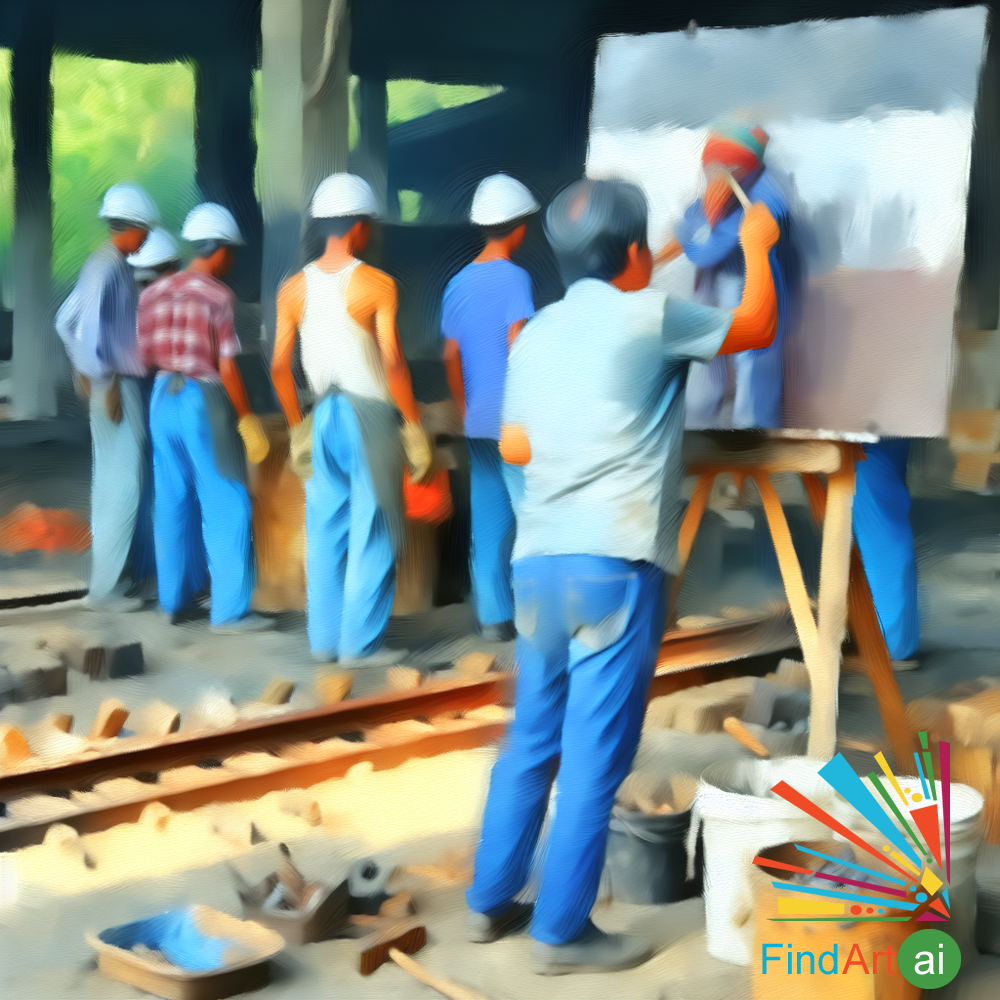Realism
Realism painting is a 19th-century art movement that focuses on depicting subjects as they appear in everyday life, without idealization or romantic embellishment. Realist painters sought to portray the world truthfully, often emphasizing the lives of ordinary people, working-class subjects, and unglamorous realities. This style was a reaction against the exaggerated emotionalism of Romanticism and the grandeur of Neoclassicism, favoring accurate, detailed, and straightforward representations of the world.
Key Characteristics of Realism
- Focus on Everyday Life:
- Realist paintings often depict ordinary people and scenes from everyday life, including laborers, farmers, and common folk, rather than heroic or mythological figures. The subjects are shown in mundane activities like working, resting, or interacting with their environment.
- Example: Gustave Courbet’s The Stone Breakers, which depicts two men engaged in the backbreaking labor of breaking stones, a scene of everyday working-class life.
- Objective Representation:
- Realist artists aimed to represent subjects as truthfully and accurately as possible, without idealizing or romanticizing them. The figures, landscapes, and objects are depicted with a sense of honesty, even if they reveal the harshness or struggles of life.
- Example: Jean-François Millet’s The Gleaners, which shows peasant women gleaning leftover grains in a field, focusing on their hard labor without glorification.
- Detail and Precision:
- Realism emphasizes precise and detailed depiction, often with a high level of attention to texture, light, and form. Artists strove to capture the fine details of their subjects to create a sense of accuracy and authenticity.
- Example: Honoré Daumier’s Third-Class Carriage realistically captures the cramped, uncomfortable conditions of train travel for the lower class, with detailed expressions and postures.
- Social Commentary and Critique:
- Many Realist painters used their work to critique social and political issues of the time, such as poverty, labor conditions, and inequality. By focusing on the working class and rural life, they challenged the aristocratic and romanticized views of society often seen in earlier art.
- Example: Courbet’s Burial at Ornans portrays an ordinary funeral in a rural village, emphasizing the solemnity and gravity of the event without idealizing the people involved.
- Naturalistic Colors and Lighting:
- Realism favors natural lighting and color palettes, avoiding the dramatic contrasts or bright, exaggerated colors found in previous art movements. The use of subdued tones reflects the desire to portray the world as it is, without artistic enhancement.
- Example: Winslow Homer’s The Veteran in a New Field uses earthy tones and natural light to depict a farmer in the aftermath of the American Civil War, emphasizing the return to simple, honest labor.
- Lack of Idealization:
- Unlike styles such as Neoclassicism, which idealizes the human form and heroic events, Realism shows people and settings in their true, often unflattering state. Figures may appear tired, aged, or worn, with no attempt to beautify them.
- Example: Édouard Manet’s Olympia, while often considered a precursor to modernism, shows a nude figure without the romanticized softness typical of earlier depictions of women.
Common Themes in Realism
- Working-Class Life: Many Realist works focus on laborers, farmers, and everyday people engaged in work or domestic activities, highlighting the dignity and struggles of the working class.
- Rural Life and Landscapes: The harsh realities of rural living, such as farming and peasant labor, are often depicted in Realist paintings, showing the connection between people and the land.
- Urban and Industrial Life: Some Realist artists turned their attention to the growing industrial cities and the social issues that came with modernization, such as overcrowding, poverty, and the struggles of the working poor.
Famous Realist Painters and Works
- Gustave Courbet:
- Often considered the leader of the Realist movement, Courbet’s works, such as The Stone Breakers and Burial at Ornans, emphasize the lives of ordinary people and reject the idealized subjects of previous artistic movements.
- Jean-François Millet:
- Millet is known for his depictions of rural life and the dignity of peasant labor. His painting The Gleaners is a classic example of Realism, focusing on the physical toll of agricultural work.
- Honoré Daumier:
- A French painter and printmaker, Daumier often used his art to critique social injustices. His painting Third-Class Carriage reveals the hardship and alienation of the lower class in urban settings.
- Winslow Homer:
- An American Realist painter, Homer is famous for his depictions of rural and coastal life. His works, such as The Veteran in a New Field, often reflect themes of survival, resilience, and the impact of war on everyday life.
- Édouard Manet:
- Though sometimes considered a bridge to modern art, Manet’s works, such as Olympia, display many Realist qualities in their direct, unidealized portrayal of contemporary figures and situations.
Realism painting is defined by its truthful, unembellished depiction of everyday life, focusing on ordinary people, social realities, and the natural world. Rejecting the idealization of earlier movements, Realist artists portrayed the world with honesty and precision, often highlighting social issues and the dignity of the working class. Through detailed, naturalistic representation, Realism provides a clear-eyed view of society, aiming to reflect life as it truly is.
Realism Paintings with Working-Class Life Theme
Realism paintings with a working-class life theme are powerful depictions of the everyday struggles ...

